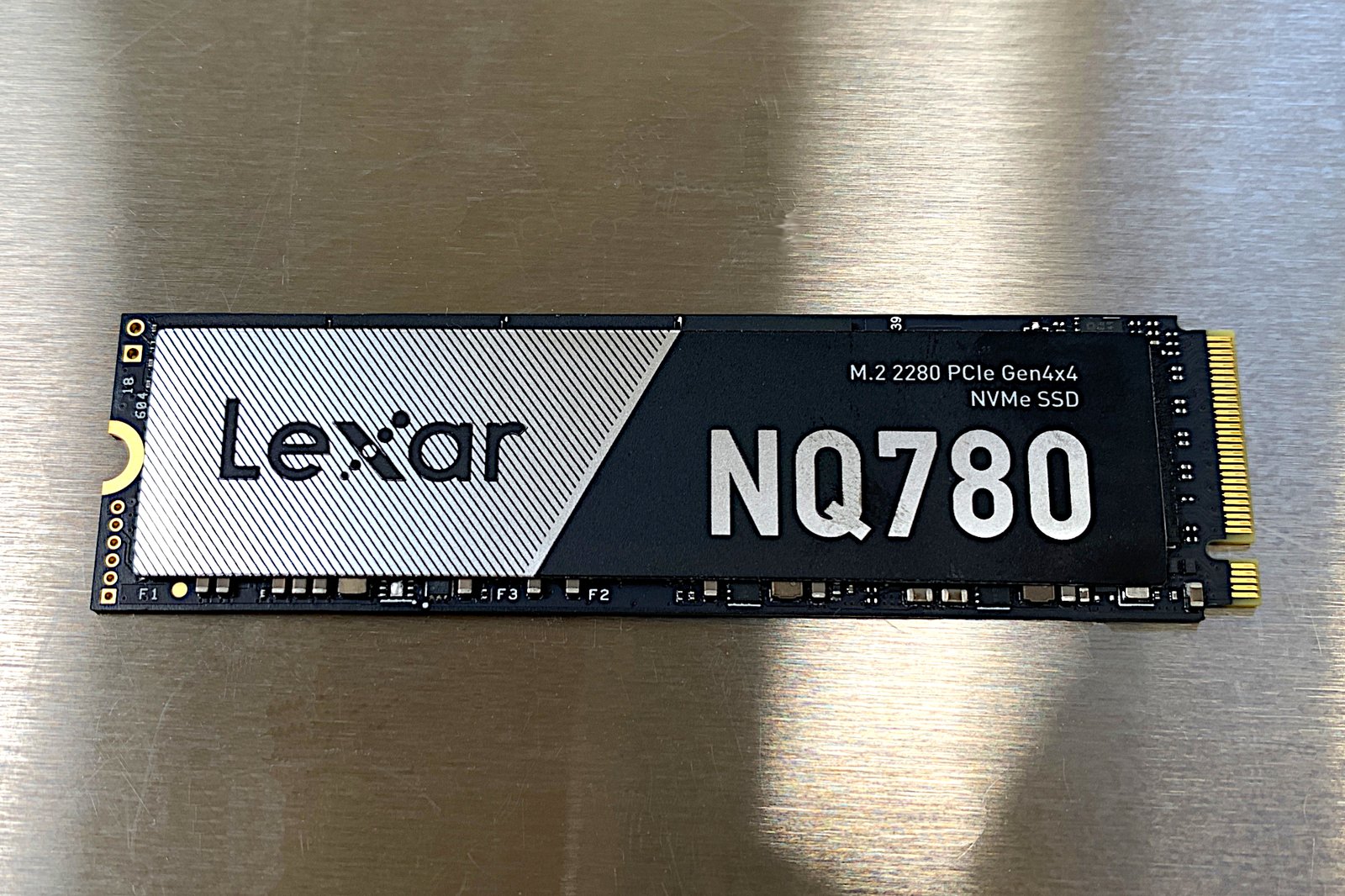Expert’s Rating
Pros
- Good PCIe 5.0, host memory buffer performance
- Fastest native-writing QLC NAND we’ve seen
- Affordable
Cons
- Still slows to 450MBps writing natively
Our Verdict
Up against some stiff competition, the Lexar NQ780 proved itself with aplomb. Buy it at the right price.
Price When Reviewed
This value will show the geolocated pricing text for product undefined
Best Pricing Today
Best Prices Today: Lexar NQ780 SSD
I love it when new stuff shows up, and from the faster native-write performance and much larger TBW rating, the QLC NAND inside the Lexar NQ780 reviewed here seems to be new to the party. Woohoo!
Read on to learn more, then see our roundup of the best SSDs for comparison.
What are the Lexar NQ780’s features?
Lexar’s NQ780, NVMe 2.0, 2280 (22mm wide, 80mm long) SSD uses the PCIe 4.0 transfer protocol (x4). And as you might guess from the Q in the model name, it uses stacked QLC NAND. The controller is an Innogrit IG5326. The design uses host memory buffer (system memory) for primary caching, so there’s no DRAM on board.
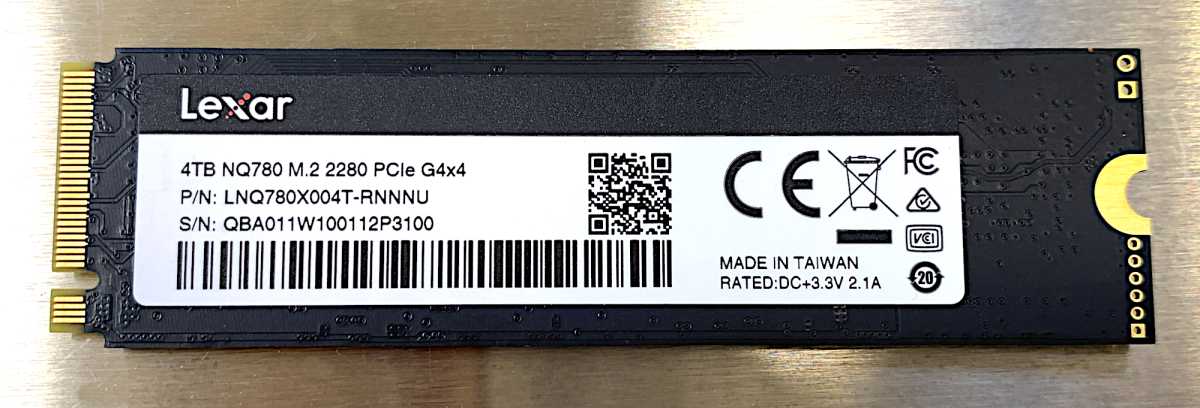
Lexar warranties the NQ780 for five years and/or 600TBW (terabytes that may be written) per terabyte of capacity. Write more than that (unlikely) and the warranty is dead –though not necessarily the drive. You won’t lose data when the percentage used reaches 100 percent, just the ability to write more.
By the way, that’s a very high TBW rating for QLC NAND, which usually is in the 200- to 250TBW region. That reinforces my belief that this is a new type of QLC.
How much is the Lexar NQ780?
At the time of this writing you could glom onto a 4TB (tested) NQ780 for $290, a 2TB for $150, and a 1TB for $80. That’s about standard for bargain SSDs, but not outstandingly cheap.
How fast is the Lexar NQ780?
I’m always happy when faster NAND shows up, especially QLC NAND, as in Lexar’s NQ780. It nearly tripled what I normally see from quad-level cell flash memory writes, though it could of course be a controller trick.
All NVMe SSDs are fast. That said, the 4TB NQ780 placed about middle of the pack in performance. It ranked third out of six HMB/QLC SSDs, 13th out of all 32 HMB SSDs, and 39th out of the 57 NVMe SSDs of all types that I’ve tested. It more than held its own in CrystalDiskMark 8’s sequential testing, though.

The NQ780’s CrystalDiskMark 8 random performance was good, but behind the pack, and way short of the WD Black SN7100.
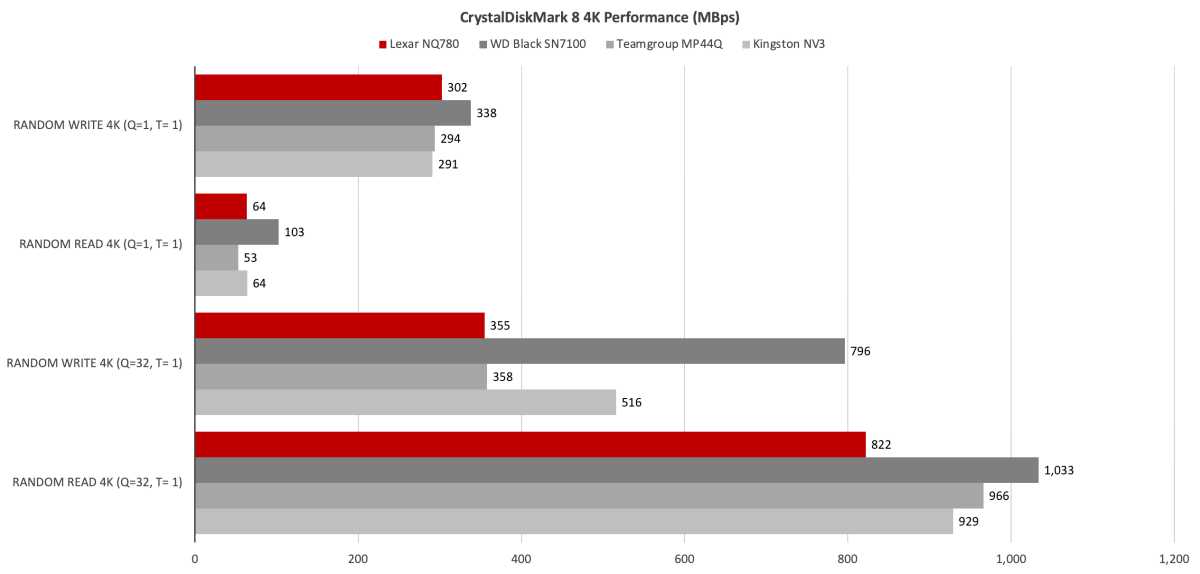
The 48GB transfer times were also good, if not record-setting.
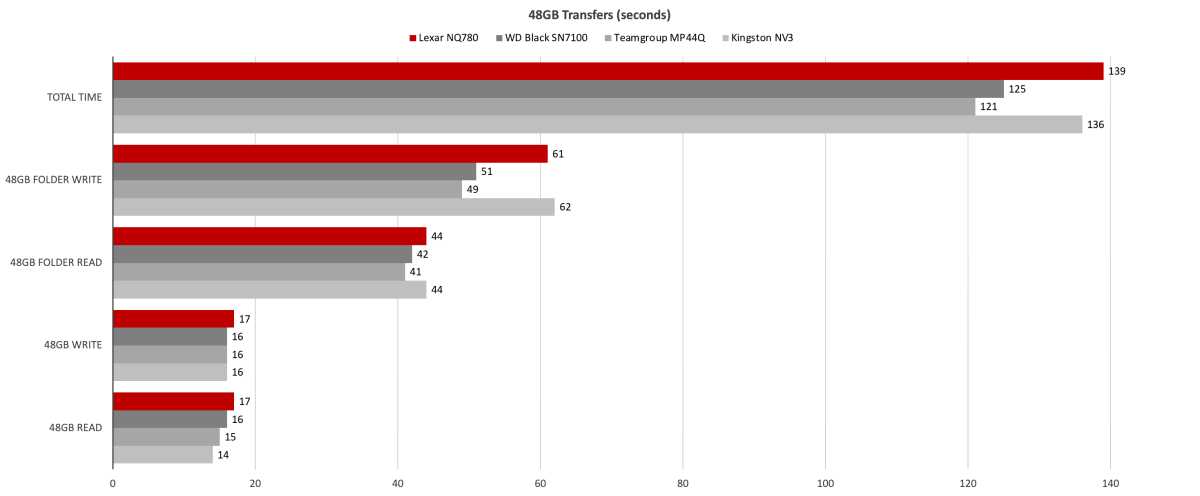
Writing 450GB took the NQ780 just over two and a half minutes — within shouting distance of the Kingston NV3, which was the fastest of the listed drives. The other being the Teamgroup MP44Q. Note that the WD uses TLC NAND.
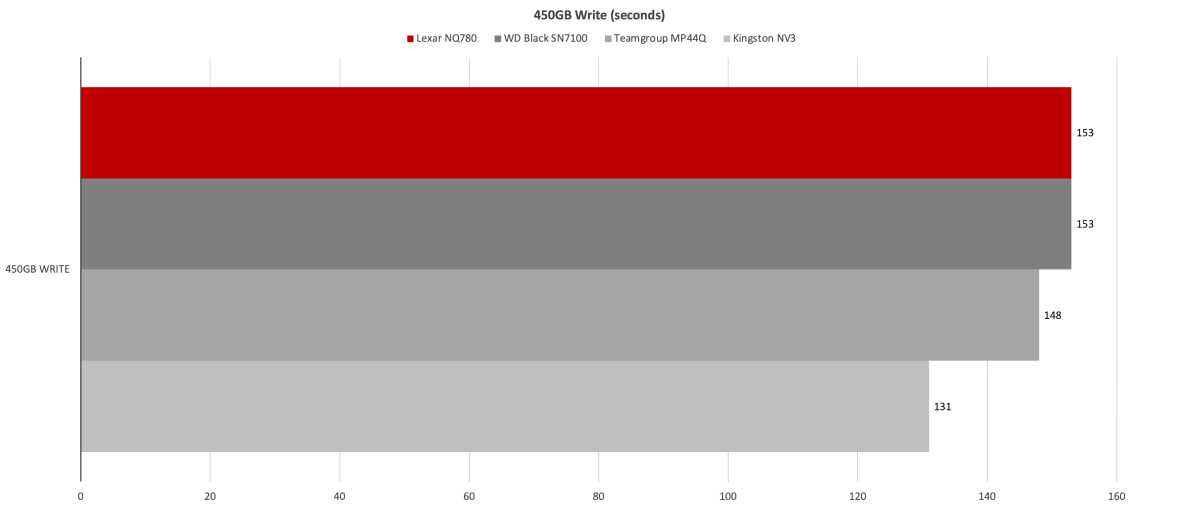
While it’s not the fastest drive listed here, the NQ780 is easily fast enough for most purposes and the native write rate (secondary write as SLC cache is exhausted) is two to four times that which I’ve seen from other QLC NAND SSDs. See the image below.
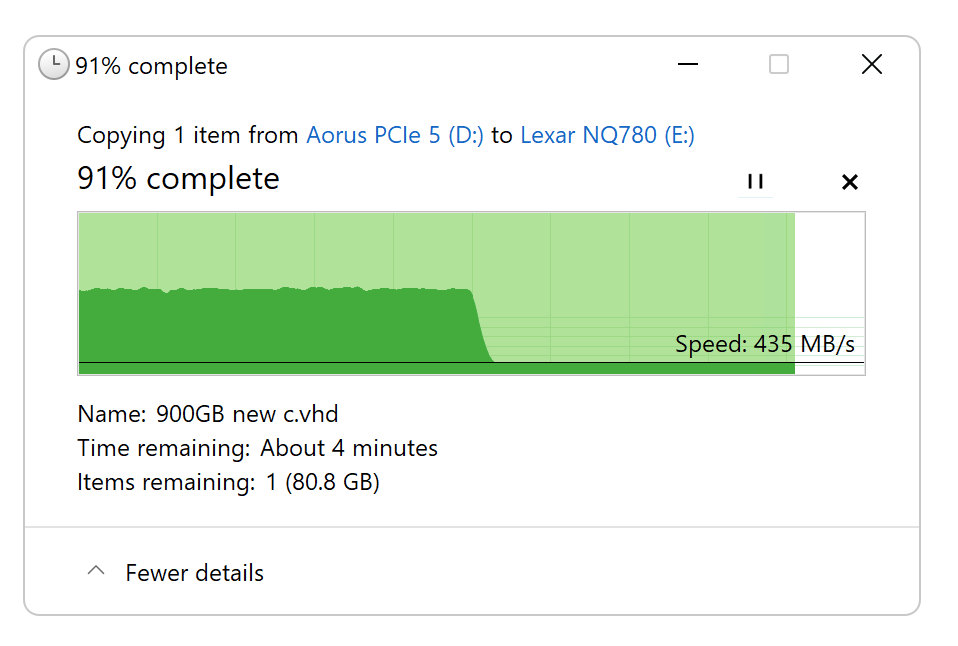
Should you buy the Lexar NQ780?
Given the right price, I wouldn’t say no to the NQ780, with it’s newly faster-off-cache QLC NAND. While it’s not the speediest kid on the block, it is affordable.
How we test
Our storage tests currently utilize Windows 11 (22H2) 64-bit running on a Z790 (PCIe 5.0) motherboard/i5-12400 CPU combo with two Kingston Fury 32GB DDR5 modules (64GB of memory total). Intel integrated graphics are used. The 48GB transfer tests utilize an ImDisk RAM disk taking up 58GB of the 64GB total memory. The 450GB file is transferred from a Samsung 990 Pro 2TB, which also contains the operating system.
Each test is performed on a newly formatted and TRIM’d drive so the results are optimal. Note that as any drive fills up, performance will decrease due to less NAND for secondary caching, and other factors.
The performance numbers shown apply only to the drive we were shipped as well as the capacity tested. SSD performance can vary by capacity due to more or fewer chips to read/write across and the amount of NAND available for secondary caching (writing TLC/QLC as SLC). Vendors also occasionally swap components. If you ever notice a large discrepancy between the performance you experience and that which we report (systems being roughly equal), by all means — let us know.
This articles is written by : Nermeen Nabil Khear Abdelmalak
All rights reserved to : USAGOLDMIES . www.usagoldmines.com
You can Enjoy surfing our website categories and read more content in many fields you may like .
Why USAGoldMines ?
USAGoldMines is a comprehensive website offering the latest in financial, crypto, and technical news. With specialized sections for each category, it provides readers with up-to-date market insights, investment trends, and technological advancements, making it a valuable resource for investors and enthusiasts in the fast-paced financial world.
